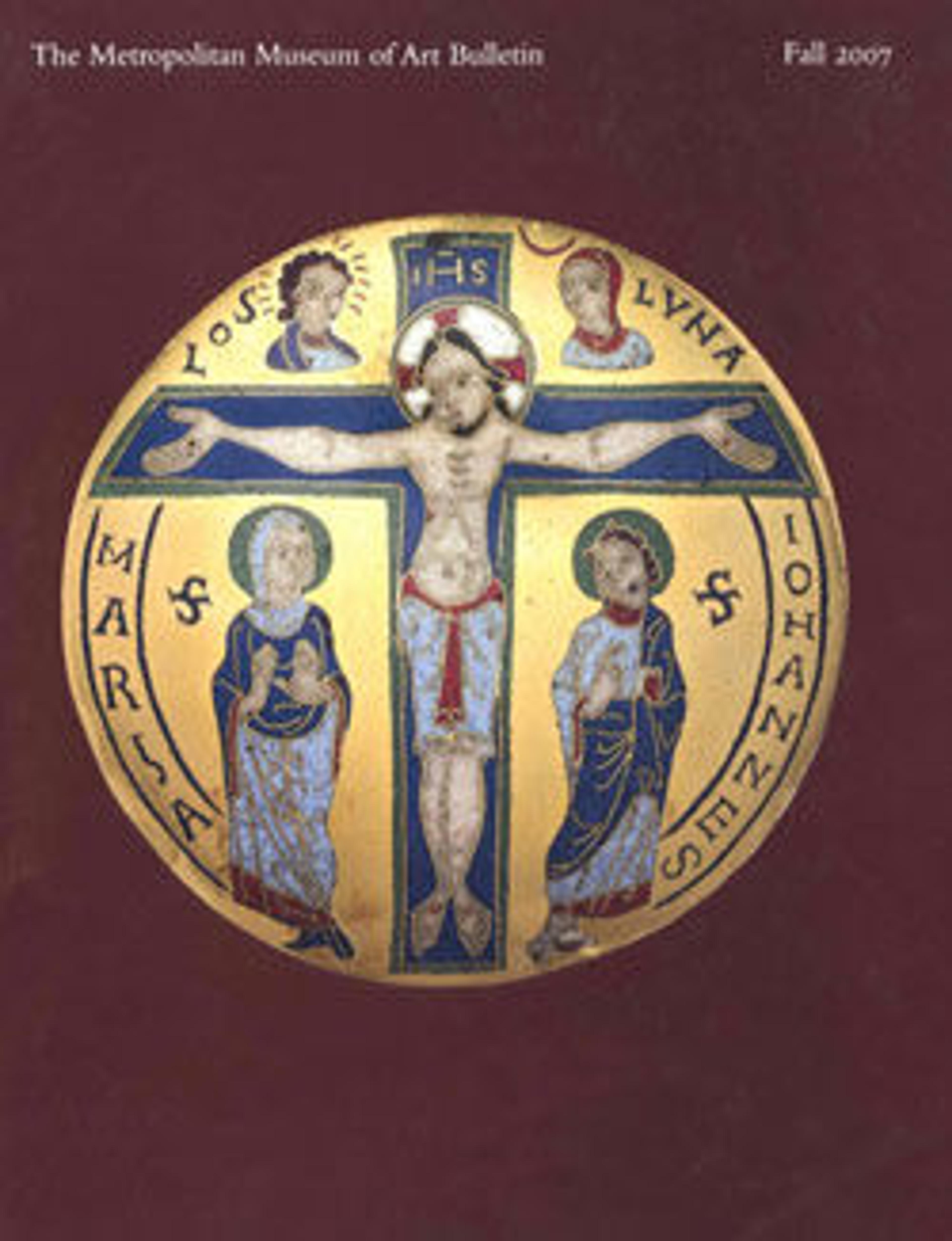Sketchbook
Arshile Gorky is most often identified with the biomorphic abstractions he created in the 1940s, like The Met's painting Water of the Flowery Mill (1944; MMA 56.205.1). But prior to achieving that mature style his work underwent several transformations that reflected his study of artists from Jean-August-Dominique Ingres to Pablo Picasso. One pencil drawing in this rare early sketchbook from about 1930–37 reveals Gorky's admiration for Ingres's portraits and fine graphic line. In it, he combined figures from two different Ingres drawings: in the center is the standing mother and child from Madame Guillaume Guillon Lethière, née Marie-Joseph-Honoree Vanzenne, and Her Son Lucien Lethière (1808; MMA 29.100.191), and at the top right is the head of the sitter in François Forster (1825; Musée Bonnat, Bayonne). Consciously or unconsciously, Gorky altered the faces so they resemble the members of his own family, giving them large heavy-lidded almond-shaped eyes and ovoid heads with softly pointed chins. Such faces and family groupings occupied Gorky between 1926 and 1942, when he painted and drew many portraits and self-portraits, including two major canvases titled The Artist and His Mother (Whitney Museum of American Art, NY and National Gallery of Art, Washington, D.C.), in which he depicted himself as a young boy.
Artwork Details
- Title: Sketchbook
- Artist: Arshile Gorky (American (born Armenia), Khorkom 1904–1948 Sherman, Connecticut)
- Date: ca. 1930–37
- Medium: Sketchbook of pen and black ink, pen and brown ink, and graphite on paper
- Dimensions: 12 3/16 × 9 13/16 × 3/8 in. (30.9 × 25 × 1 cm)
Sheet: 11 7/8 × 9 13/16 in. (30.2 × 25 cm) - Classification: Drawings
- Credit Line: Bequest of William S. Lieberman, 2005
- Object Number: 2007.49.42
- Curatorial Department: Modern and Contemporary Art
More Artwork
Research Resources
The Met provides unparalleled resources for research and welcomes an international community of students and scholars. The Met's Open Access API is where creators and researchers can connect to the The Met collection. Open Access data and public domain images are available for unrestricted commercial and noncommercial use without permission or fee.
To request images under copyright and other restrictions, please use this Image Request form.
Feedback
We continue to research and examine historical and cultural context for objects in The Met collection. If you have comments or questions about this object record, please contact us using the form below. The Museum looks forward to receiving your comments.
